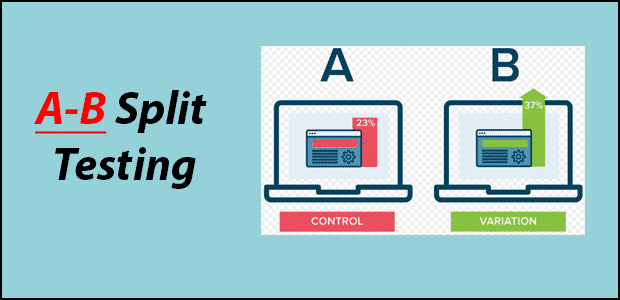The sales funnel is an effective way of visualizing how your marketing campaign works, and the route that a target takes from seeing your advertisements to becoming a paying customer. The sales funnel includes every part of the buying process, and it shows the ideal route, and how each activity relates to others during the campaign.
A typical sales funnel would look something like this:
- Marketing through acquisition channels
- Visitors
- Leads
- Opportunities
- Sales
- Satisfaction
- Retention
- Cross selling, up-selling and winback for repeat customers
That is a single funnel, but the real picture is rather different, and looks more like a web, with multiple acquisition channels creating leads from different avenues, and even your existing satisfied customers sometimes feeding you leads. Mapping out this process will help you find strengths and weaknesses in your marketing.
Using analytics, you can track the sales funnel process and identify where you are losing people. If your landing pages and sales copy are poor, then there’s a high chance that your visitors aren’t even turning into leads. In some ways, this is the ideal scenario, because it’s the easiest one to fix. You can try different designs and run A/B tests to see what gets the best response, and hopefully see a huge return on your investment by improving those pages.
If your issues are deeper in the funnel, then it may take more time to figure out what’s wrong. That’s where more proactive user testing and heatmapping can come in. Get users to video themselves navigating your website. Use recording software to track what people do and where their mouse moves as they are working through the purchase process. Look at signup rates and open rates for your email marketing. Pay attention to cart abandonment rates to get an idea of where exactly in the conversion process you are losing people.
Many store owners make the mistake of focusing on creating awareness of offers and trying to generate traffic at the entrance to the funnel, hoping that enough people will make it through to the end that it doesn’t matter how many people are lost. This is an inefficient way of thinking, and it’s something that could be costing your organisation a lot of money.
It costs more money to acquire new leads that actually convert than it does to improve the conversion funnel for your existing leads, and turn a current customer into a repeat customer. The trick is to test your funnel in a systematic way.
 Setting up funnel visualisation in Google Analytics is a relatively simple process. There is a ‘goal funnel’ section that will let you configure the expected route that you want customers to take, from store page to ‘add to cart’, then viewing the cart, going through the payment process and being taken to a confirmation page. You can give the goal a value, as well ” and this can be useful for non-sales related funnels.
Setting up funnel visualisation in Google Analytics is a relatively simple process. There is a ‘goal funnel’ section that will let you configure the expected route that you want customers to take, from store page to ‘add to cart’, then viewing the cart, going through the payment process and being taken to a confirmation page. You can give the goal a value, as well ” and this can be useful for non-sales related funnels.
Why do you care about funnels other than the “check out and pay” one? Well, imagine you sell products that are very high value. It’s unlikely that a first time visitor will pull out their credit card if they aren’t familiar with your brand, but they might join your mailing list or download a free report. They might even sign up for a free trial. If you’ve been in business for a while, you might know that 25% of the people who join a free trial become paying customers within three months. If the value of those paying customers is $1000, that means that each ‘signup’ is, indirectly, worth $250. It’s a crude metric, but it’s a useful way of working out your ROI when you advertise non money-making products.
Finding The Leaks
Once you have the funnel setup, you need to look at your leaks. The bounce rate from the first couple of pages is the most obvious leak, and then deeper in the funnel you will have exit rates as well. You will have to accept that there will always be a significant drop-off rate from the landing page. Even if you target your PPC ads very well, you will find that there is going to be people leaving your site because they were expecting something different or because they just didn’t have strong purchase intent.
Cart abandonment, though, is a more serious concern. The deeper people get through the funnel, the more important it is to retain them, and the more concerned you should be about people moving on. If you have a high percentage of people leaving on the payment page, look for reasons why that might be the case. Is the page secure? Does everything on it load properly? Is it slow to load? Are there spelling mistakes? Something is driving people away and you need to figure out what.
Fixing the Leaks

Using A-B testing is a good way of working out what people like and what they don’t like. You should aim to show your readers the best possible content, with engaging and exciting headlines, and clear sales copy. Look at your calls to action, and even play with different colors for different elements on the page. All of these factors can make a huge difference to your conversion rate. Even font sizes can help, in some cases.
Another thing to look at is the purchase path itself. Ideally, the path should be as short and low friction as possible. Use inline forms instead of requiring multiple page loads. Try to shorten the checkout process to just one page if possible, and keep things like terms and conditions to a minimum. The less work your users have to do, the more likely they will be to convert.
Remember that many users are trying to make purchases on smartphones now, and it is hard to fill out long forms and even enter payment details. They will most likely hit the back button and go somewhere else if you don’t make it easy for them. You might have a window of opportunity if they are a first time buyer, but repeat customers have come to expect one-click ordering.
Perhaps the highest ROI for a decently healthy, existing business would come from improving your conversion rate with existing customers. Use cross-selling and up-selling to get them to buy more things each time, and get repeat business from consumables and upgrades. This is what printer companies and washing machine manufacturers do. It was how VCR and DVD companies made extra profits, and it’s something you can apply to almost any business that sells physical goods. Whatever you sell will probably require care and maintenance or have the option for upgrades at a later date, so push on with that.
One thing you might discover when working on conversion funnel optimisation is that your customers don’t behave anything like you expect them to. That isn’t always a bad thing. It may be that you end up needing to change the way you resent things, or that you need to have your sales people take a different approach. Perhaps you need to secure the interest of customers in a different way and then work on building up to the sales that you want the most. This can be common in the service industry. It might be that you have been trying to sell something that is too expensive, and that you would do better if you focused on something smaller to begin with, using value-ads to increase the deal later on.
Pricing is an important and often overlooked part of the sales funnel. When you lower your prices, you lower your margins, and you need to work a lot harder to get the number of sales required to make up the profit that you were looking for. You need to think about this carefully; can you really afford to lower your prices in an attempt to get more sales? Sometimes it makes sense to do so. Sometimes it doesn’t make sense and you’d be better off perhaps even increasing your prices so that you appeal to a different subset of customers.
Think about your dream audience, and think about what would happen if they became advocates for your brand. Get a clear idea of who you want to raise awareness with, and make sure that everything you do reflects that. Your idea should be to have a smooth and efficient sales funnel that picks up qualified leads and sends them to the checkout page. A wide funnel is no good if it is going to lead to people ‘spilling over’ and give you a poor conversion rate. By trying to be all things to all people, you will just end up losing customers that you might otherwise have been able to turn into long term, valuable leads.
Don’t make the mistake of assuming that you dream customer is whoever will give you money. You don’t want the discount hunters or the complainers – you only want the people who love your brand and who will advocate for it.
